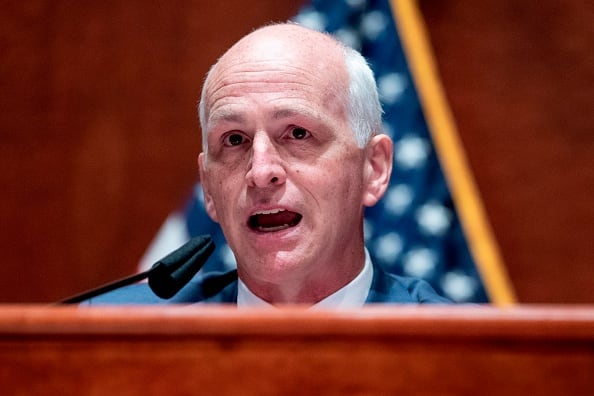WASHINGTON ― Weeks after the U.S. military was blindsided by President Donald Trump’s assertion that all U.S. troops will be out of Afghanistan by the end of the year, a top lawmaker on defense says there was no actual plan to withdraw troops by Christmas.
House Armed Services Committee Chairman Adam Smith on Thursday echoed U.S. officials who have reportedly said there were not aware of the plan and received no actual order to accelerate the gradual pullout they’ve been executing. The military will continue a gradual pullout, Smith said.
“I think the idea of bringing those numbers down as the president has done makes a lot of sense,” Smith, D-Wash., said at a Center for New American Security webinar. “Now, there’s been sort of a plan to do that, and there’s sort of been a tweet we should get out by Christmas. Well, there’s no plan to get out by Christmas, there’s just not. The White House hasn’t submitted one and the Pentagon doesn’t have one.”
The topic has featured in the presidential race between Trump and former Vice President Joe Biden, who have both suggested that America’s longest war needs to end. Biden wants to pull “the vast majority” of U.S. troops out of Afghanistan while Trump’s second-term agenda would continue to reduce the U.S. military presence in Afghanistan and elsewhere. Election Day is Nov. 3.
During his election campaign four years ago, Trump pledged to bring all troops home from “endless wars,” at times triggering pushback from military commanders, defense leaders and even Republican lawmakers worried about abruptly abandoning partners on the ground. Trump is responsible for initiating historic peace talks with the Taliban, now proceeding with the Afghan government.
In a wide-ranging interview about Democratic foreign policy ideas, Smith favored an aggressive drawdown and was confident a combination of partner forces and U.S. intelligence could be used contain the threat of a transnational attack from Afghanistan. The risks of maintaining a military presence, he said, need to be weighed against the costs in blood and treasure.
“If you’re waiting until there’s peace in Afghanistan ... that’s not going to happen,” Smith said, adding: “We’ve been there almost 20 years now. I think it’s pretty clear that our military is not going to solve that problem.”

Confusion about the pace of U.S. troop withdrawals from America’s longest war — an emotional topic for the troops and their families — began Oct. 7, when Trump tweeted that “we should have the small remaining number of our BRAVE Men and Women serving in Afghanistan home by Christmas.”
Defense officials have insisted there are no plans to have all troops home from Afghanistan by the holidays or the end of the year. U.S. officials also said earlier this month that there currently is no approved plan to reduce the number to 2,500 by early next year. The officials spoke with the Associated Press on condition of anonymity to discuss internal deliberations.
Trump’s tweet about Christmas alarmed Pentagon and State Department officials who fear that putting a definitive date on troop withdrawal could undercut negotiations to finalize ongoing peace negotiations between the Taliban and representatives of Afghan society, including the current Afghan government.
They also worry that a hasty withdrawal could force the U.S. to leave behind sensitive military equipment. And they continue to stress that the Taliban have still not met requirements to reduce violence against the Afghans, a key element of the U.S. withdrawal plan.
The topic was the subject of contradictory remarks from Trump’s national security adviser Robert O’Brien, who asserted the number of U.S. troops in Afghanistan would shrink to 2,500 early next year, and Gen. Mark Milley, chairman of the Joint Chiefs of Staff. Milley subsequently said that the U.S. is executing a plan to reduce the number of troops to 4,500 in November, but talk of any further reduction would be “speculation.”
During an online event hosted by the Aspen Institute earlier this month, O’Brien downplayed Trump’s tweet as part of a long tradition of leaders who say they would like to have forces back home for the holidays. He insisted however, that the 2,500 number was in play and seemed to swipe at Milley.
“It has been suggested by some that that’s speculation. I can guarantee you, that’s the plan of the president of the United States,” O’Brien said. “That’s the order of the commander-in-chief. That’s not speculation.”
The Associated Press contributed to this report.
Joe Gould was the senior Pentagon reporter for Defense News, covering the intersection of national security policy, politics and the defense industry. He had previously served as Congress reporter.




